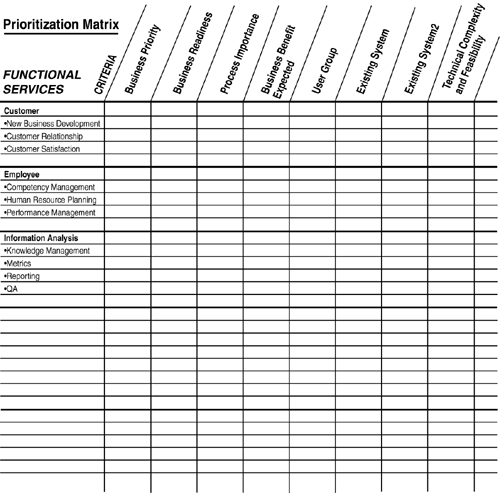Establishing Your Requirements
The first step in acquiring vendor services is to get clear about what you need and document it in enough detail that you can evaluate vendors against your stated needs. This process is called establishing requirements and provides the basis for requesting information and proposals from vendors. When established, your requirements will support selecting a vendor, and managing your relationship with them after you've made the selection.
Defining a Required Technology Service
When you are looking for technology services, such as direct mail providers or consultants, who conduct customer surveys and focus groups, you need to identify your requirements up front and provide them as the roadmap to your potential vendors.
Adopting an Iterative Approach
Professional development teams deliver software in staged releases. The release strategy is characterized by short development cycles (average 1–3 months), prioritization of needs, and the use of reusable components, which enable us to benefit from prior experiences on similar projects.
One reason companies produce software with iterative processes is that it enables you to bring a product to market quickly, even if all the planned features are not active at the time of the first release.
Software companies often release software with advanced features “grayed out,” delivering them as soon a possible after the initial release.
Staging Delivery Through Releases
You need to shift your way of thinking back and forth from big-business “corporate-think” to small-business “net-think.” Or, if you like, from big-business hierarchical to small-business relational. Shifting back and forth means staying in the middle and it enables us to make a departure from the “all or nothing” way of planning.
We have to learn to take the next small step, without knowing what all the steps will be in advance. In project terms, this means planning for the next 30–90 days, and adjusting as you go. It means changing the way you think about commitment and investment. You make small investments and see how they work, then you adjust and make another small investment. The trick, I think, is holding your vision and the larger commitment to seeing it through, but letting the form of it shift and grow as you go. This is how iterative design and development is done.
Prioritizing Your Business Needs
You'll need to define your goals for your CRM systems, figuring out what matters most to you in this endeavor. Decide on your vision—why you wanted to use CRM in the first place—and return to it often. Identify key problem(s) to solve and areas to improve.
Time spent defining and refining your vision in the early stages will pay off when you get to the design stage of your project. It will give you a basis for making all the technical and design decisions that you will face.
The way to stay focused at this point is to develop just enough to deliver your goals. Resist the temptation to continually expand the scope of your efforts, adding one “neat idea” after another to the design without going ahead and implementing any of the ideas. Now is the time to cut away the extraneous, decide what's really most important to do first, and go for it.
You might want to develop a service prioritization matrix showing the business services that you require (x axis) versus your criteria for prioritization (y axis). Required business services might be grouped according to major subject areas, and include items such as the following:
Customer
New Business Development
Customer Relationship
Customer Satisfaction
Employee
Competency Management
Human Resource Planning
Performance Management
Information Analysis
Knowledge Management
Metrics
Reporting
Quality Assurance
Criteria for prioritization should include items such as the following:
Business priority
Business readiness (how ready is your business for this service?)
Process importance
Business benefit expected
User group affected
Existing system(s)
Technical complexity and feasibility
Figure 16.1 shows an example of the service prioritization matrix. The “Use Case Corner” section at the end of this chapter shows another example of the service prioritization matrix.
Figure 16.1. The prioritization matrix makes it easy to prioritize your business requirements.

Getting Early Customer Feedback
Testing and publication of your first release will reveal changes and improvements, which can then be built into future releases. Now is the time to solicit feedback from users and customers on the features of your CRM system that you have implemented. Monitor your results and make adjustments as needed. Are you reaching your goals? Are your customers more satisfied and/or more loyal? Are your staff members executing new processes consistently?
